Ice and Roof Damage Risks
Ice can have a significant impact on the roof of a building, causing damage and potential safety hazards. There are several ways in which ice can negatively affect a roof:
Ice Damming: Ice damming occurs when snow melts on the roof and then refreezes at the edge, creating a dam of ice that can trap water and cause it to seep into the roof and cause leaks and damage to the structure and insulation.
Increased Weight: Snow and ice can increase the weight on the roof, causing structural damage and even collapse in extreme cases. This is especially dangerous for older buildings or those with flat roofs.
Degradation of Materials: Prolonged exposure to ice and snow can cause the materials used in the roof to degrade and become brittle, making them more susceptible to cracking and breaking. This can also weaken the overall structure of the roof.
Shifting: The constant freeze-thaw cycle can cause the roof to shift, leading to cracks and other structural damage.
Mold and Mildew: Leaks caused by ice damming can lead to mold and mildew growth, causing health hazards and damage to the building’s structure.
It is important for building owners to regularly inspect their roofs and address any potential issues caused by ice and snow. This may include removing snow and ice, adding insulation, and ensuring proper ventilation to prevent ice damming. Regular maintenance and repair can help to mitigate the negative effects of ice on the roof and ensure the safety and longevity of the building.
In conclusion, ice can have serious consequences for a building’s roof and it is important for building owners to take preventative measures to protect their properties. Regular maintenance and inspections can help to minimize the damage caused by ice and ensure the safety of the building and its occupants.
Related Posts
Which Roofing Materials should you choose?
Metal Roof Restoration Project
IB PVC Single-ply roof
Fabric Reinforced Coatings
Metal Roof Restoration Crockett,Texas
TPO Roofing Project Beeville Texas
PVC Single-ply roof
E-Z Mart convenience store, Mineral Wells, TX

